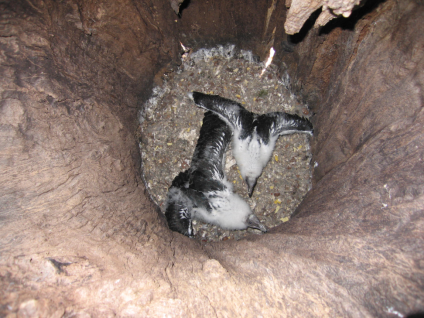
But UC Cooperative Extension advisor Greg Giusti has found a surprising level of interest from the public in his Northern California research project about turkey vultures' nesting preferences in oak woodland.
“Animals with cute fuzzy faces are far more attractive in our culture,” said Giusti, a wildland ecology expert. “Turkey vultures have been overlooked. Very little is known about their biology and environmental needs.”
Giusti worked with Robert Keiffer, superintendent of the 5,300-acre UC Hopland Research and Extension Center in Mendocino County, to better understand the nesting habits of the red-faced scavengers.
In the study area, the researchers counted 417 trees in all; seven of them had suitable nesting elements for turkey vultures. They found that the vultures at the Hopland facility select large hollow trees – either dead or alive, either shaded or in the sun – to lay eggs and rear their young. The tree species in the study included blue oak, interior live oak, Oregon white oak and valley oak.

“This is very different from other large birds, like eagles and osprey, who build open cup nests high up in tall trees, which they may use for generations,” Giusti said.
After turkey vulture chicks hatch, the parents drop into the cavity five or six times a day to feed their young, Giusti said. How birds with a five-foot wingspan traverse a deep vertical tunnel is a mystery.
“They just shimmy up and down, I would imagine,” Giusti said. “We don't know how the young birds do it when they fledge. We've never witnessed the adult birds calling them out.”
Giusti said the scientists will continue to build on the turkey vulture nesting database they have started with results from this project. In the coming years, they hope to learn whether turkey vultures will re-use successful nesting sites and whether they may be found nesting in fallen logs or rock piles.
In the video clip below, a turkey vulture explores a possible nesting cavity at the UC Hopland REC.
An initiative to maintain and enhance sustainable natural ecosystems is part of the UC Division of Agriculture and Natural Resources Strategic Vision 2025.